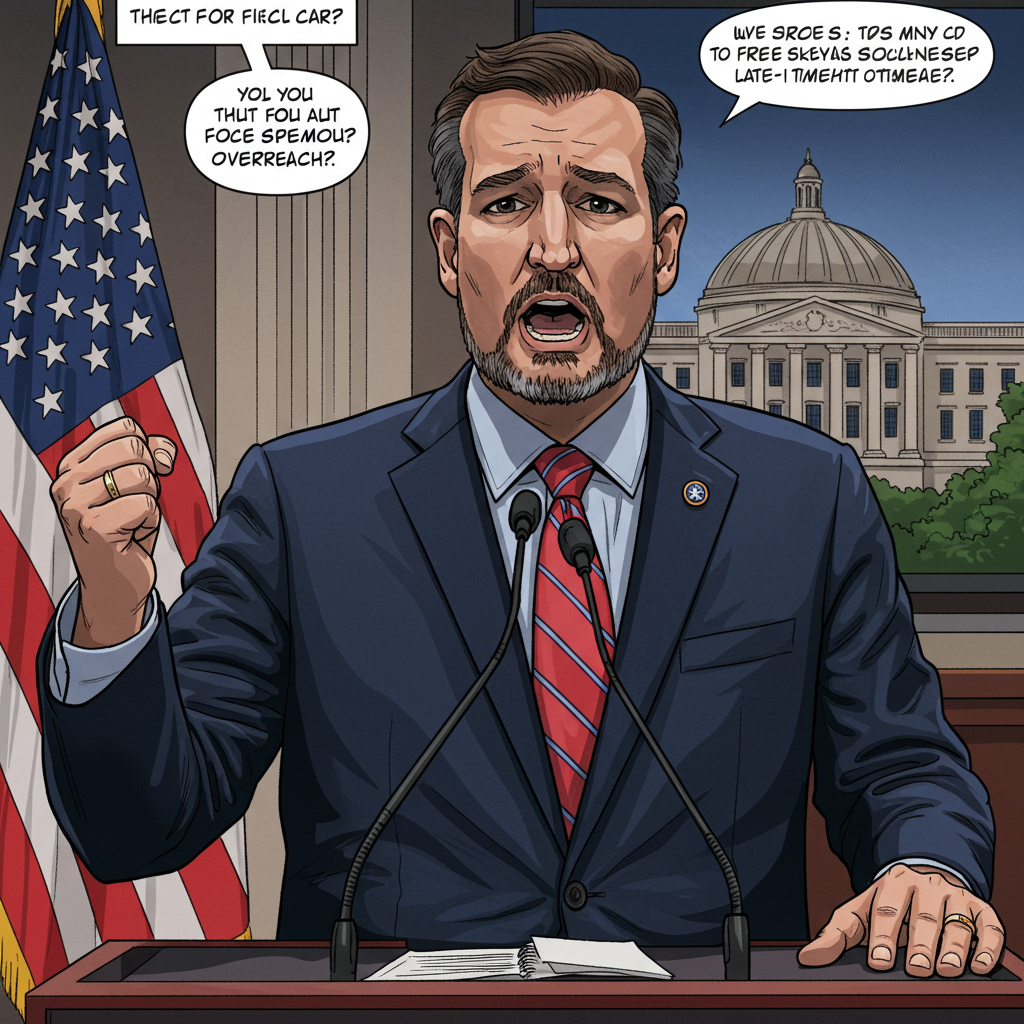Washington D.C. witnessed a critical legislative maneuver late Saturday as the U.S. senate took a significant step forward on president Donald Trump’s ambitious “big, beautiful bill.” This sprawling package, encompassing extensive tax cuts, increased defense and border security spending, and reductions to safety-net programs like medicaid, cleared a key procedural hurdle. However, despite this victory for Republican leaders and the White House, the ultimate fate of the multitrillion-dollar measure remains clouded by internal GOP divisions and looming Democratic opposition.
Senate Clears Key Procedural Hurdle
The Senate voted 51-49 to advance the legislation, a crucial step that allows formal debate on the bill to begin. This vote represented the first major test of loyalty to President Trump among Senate Republicans. Securing enough votes proved challenging, requiring hours of intense lobbying by Senate Majority Leader John Thune and his team, as well as direct pressure from President Trump himself and White House officials, including Vice President JD Vance.
President Trump actively engaged with hesitant lawmakers. He met with Senators Rick Scott and Ron Johnson hours before the scheduled vote. Senator Mike Lee confirmed these interactions, noting Trump also spoke with Senator Josh Hawley, who subsequently announced his support. Notably, Senator Rand Paul, a critic of the bill, golfed with the President earlier in the day. These efforts culminated in several holdouts shifting their votes, allowing the procedural motion to pass by a narrow margin.
Inside the 51-49 Vote
The vote largely followed party lines, with 51 Republicans supporting the measure’s advancement. However, two Republican senators, Thom Tillis and Rand Paul, voted against it. Tillis’s vote drew swift public condemnation from President Trump on social media, who threatened to support potential primary challengers against the North Carolina senator. This illustrates the high stakes and intense pressure surrounding the vote. Earlier in the day, Senator Tim Sheehy had briefly voiced opposition over a public land sale provision but later confirmed his support after assurances the issue would be resolved.
Vice President JD Vance played a direct role on Capitol Hill Saturday evening. As President of the Senate, he was present in case of a tie vote and huddled with key senators like Johnson, Lee, Scott, and Cynthia Lummis ahead of the final tally. Their eventual votes were critical to the bill clearing the procedural threshold. Securing Senator Lisa Murkowski’s vote earlier in the day also proved significant. Provisions benefiting her state, including one expanding deductions for a special group of whalers, were reportedly added to the bill’s latest version as leaders sought her support.
What’s in the ‘Big, Beautiful Bill’?
The legislation is a massive undertaking, reportedly spanning close to 1,000 pages. It consolidates numerous Republican priorities. At its core are substantial federal tax cuts impacting various income levels and businesses. Simultaneously, it proposes significant spending increases for national security, particularly the Pentagon and agencies focused on border security and deportation efforts.
Crucially, the bill also includes significant cuts to government safety-net programs. Medicaid is a primary target, with provisions aimed at downsizing the joint federal-state health program for low-income individuals and families. Conservative senators, like Ron Johnson, pushed for even deeper cuts, specifically seeking an amendment to cap enrollment in Medicaid expansion programs, arguing this would generate substantial savings. This aspect of the bill has drawn strong criticism from Democrats and sparked concerns among some Republicans.
Concerns Over Spending and Cuts
The bill’s proposed cuts to Medicaid have become a major point of contention. For families relying on these programs, these cuts represent potential life-and-death situations, as highlighted by one family’s story from Missouri mentioned in related reports. Hospitals, including those in Louisiana, have also expressed alarm to House Speaker Mike Johnson regarding the potential impact of these proposed Medicaid reductions. Some Republican hardliners, while supporting the overall bill, initially demanded bigger spending cuts or specific policy changes related to programs like Medicaid before agreeing to vote to advance the measure.
Beyond Medicaid, other concerns linger, including potential impacts on the State and Local Tax (SALT) deduction and the necessity of increasing the national debt limit as part of the overall fiscal package. The complexity and scale of the bill mean various provisions are under scrutiny from different factions within both parties.
Trump’s Push and Public Reaction
President Trump celebrated the procedural victory on his social media platform, Truth Social, declaring a “GREAT VICTORY” and praising the senators who supported the bill’s advancement. He specifically highlighted Senators Scott, Lee, Johnson, and Lummis, calling them “Republican Patriots.” His public engagement underscores his personal investment in seeing this legislation passed swiftly. Trump has set an ambitious deadline, reportedly demanding to sign the bill into law at the White House by the Fourth of July.
However, the bill has also faced significant pushback, even from outside the political sphere. Reports indicate Elon Musk referred to voting for the “megabill” as “political suicide” ahead of the crucial Senate vote, reflecting potential public or business community apprehension about its contents. Furthermore, President Trump has been accused of using false claims to promote the bill’s benefits, adding another layer of controversy to the legislative push.
Navigating Senate Divisions and Democratic Tactics
Despite clearing the initial hurdle, Republican leaders still face the daunting task of satisfying numerous holdouts demanding changes to the bill’s substance. Senators like Susan Collins have signaled they may vote against the final passage if specific amendments are not adopted during the upcoming debate phase. Collins’ negotiations will be critical, as securing her support requires addressing her specific concerns through the amendment process, an unusual move for a Republican-led bill.
Democratic senators are united in opposition and plan to employ procedural tactics to slow the bill’s progress. Senate Minority Leader Chuck Schumer has announced that Democrats will “force a full reading” of the lengthy, approximately 940-page bill on the Senate floor. This tactic, previously used by Republicans, could consume an estimated 10 to 15 hours, delaying further action on the measure. Following the reading and initial debate, the Senate will proceed to a “vote-a-rama.”
The Impending Vote-a-Rama
The vote-a-rama is a marathon session where senators can offer numerous amendments to the bill. These votes can be both substantive attempts to alter the legislation and politically motivated efforts designed to put members of the opposing party on the spot, providing fodder for future campaign ads. For Republicans, this vote-a-rama is expected to be particularly challenging due to the internal divisions and the potential for amendments that highlight contentious aspects of the bill, such as the Medicaid cuts or other spending priorities. The fact that some Republican holdouts, like Senator Collins, plan to offer their own amendments further complicates the process for GOP leadership.
The View from the House
Even if the bill successfully navigates the Senate, it must still pass the narrowly divided House of Representatives. House Speaker Mike Johnson convened a brief call with his Republican members Saturday, urging them to refrain from public comments on the Senate version of the bill due to its fluid state. He specifically advised against posting opinions on social media platform X, seeking to maintain party unity.
Despite the Speaker’s plea, concerns in the House mirror some of those in the Senate. At least two House Republicans have publicly voiced opposition, primarily centered on the Medicaid provisions. Representative David Valadao publicly opposed the Senate bill over changes to the program, while Representative Jeff Van Drew stated he didn’t like the Senate version, feeling the House’s earlier bill had found a “sweet spot” regarding Medicaid. This suggests the bill could face significant hurdles in the House, even if it clears the Senate.
The tight July Fourth deadline adds pressure to both chambers. Getting the bill through the Senate’s procedural hurdles, the lengthy vote-a-rama, potential final passage vote, and then reconciling it or passing it in the House within days presents a formidable legislative challenge.
Frequently Asked Questions
What was the outcome of the recent Senate vote on Trump’s bill?
The U.S. Senate passed a key procedural vote on President Trump’s major tax cuts and spending bill late Saturday, with a vote of 51-49. This vote allows the Senate to begin formally debating the legislation. While a necessary step, it does not guarantee final passage and highlights ongoing divisions within the Republican party regarding the bill’s contents.
What are the next steps for Trump’s ‘big bill’ in Congress?
Following the procedural vote, the bill will undergo a potentially lengthy floor reading by Democrats. After debate, the Senate will proceed to a “vote-a-rama,” a marathon session considering numerous amendments. If the bill passes the Senate, it must then be approved by the House of Representatives before it can be sent to the President’s desk for signature, all under a tight, self-imposed July Fourth deadline.
What are the main points of contention surrounding this legislation?
Key concerns about President Trump’s bill include proposed significant cuts to government safety-net programs like Medicaid, which have drawn sharp criticism and opposition from Democrats, hospitals, and some Republicans. Conservative senators also sought changes like capping Medicaid expansion enrollment. The bill’s extensive tax cuts and large spending increases for defense and border security, alongside program cuts, create a complex package with varied impacts and strong opinions on both sides.
Conclusion
The Senate’s narrow vote to advance President Trump’s “big, beautiful bill” marks a crucial milestone but leaves its ultimate enactment far from certain. The vote underscores the intense pressure from the White House and GOP leadership to deliver on key party priorities, yet it also reveals the deep rifts that persist within the Republican caucus over specific provisions, particularly relating to spending and social programs. With Democratic delaying tactics looming and the need for subsequent House passage under a tight deadline, the path forward for this massive legislative package remains fraught with significant political and procedural challenges. The coming days on Capitol Hill will determine if the “GREAT VICTORY” declared by President Trump on Saturday night translates into enacted law.


